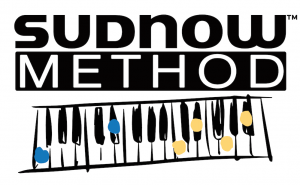The other thing I learned from trying to play from Suds’ dot songs is that I (and maybe you) tend to get lazy about working through voicing choices. At some point you’ll find yourself familiar enough with chords in certain general places on the keyboard that you’ll just voice them in one way even as the melody note may move a little.
As I’ve mentioned elsewhere (and David talked about often) voicing should be done in the context of what precedes and what follows the chord you’re working on. There’s an interesting nuance that arises as melody notes and chord progressions intersect – even more so if you’re experimenting with chord substitutions or a different ‘feel’ to a song.
One of the most appealing parts of David’s Method is that you’re not forced to think of songs as singular, immutable constructions. In fact, you’re encouraged to think just the opposite. Choose your voicings, try chord substitutions, change the tempo or feel of the song. Make the song your own.
But part of that opportunity depends on trying things out. Seeing what different choices sound like. Playing a single song in different ways. That effort, however, slows down your ability to learn a song well and thus most of us tend to stick with what we already know.
David’s dot songs reminded me that I was in a bit of a rut. Even if you’re not using the dot format to learn new songs, it’s worth reviewing David’s voicing choices to look for new perspectives. Check out his “voicing analysis” in the Basic Resources pages and, if you have an Advanced membership, review those resources for lots of insights into his thoughts about voicing and other topics.
You won’t learn everything in those resource pages with a single reading (or listening). Take the time to periodically nose around looking for new insights, or old ones that you’ve lost track of. It’s a big skill. Repetition pays off eventually.
